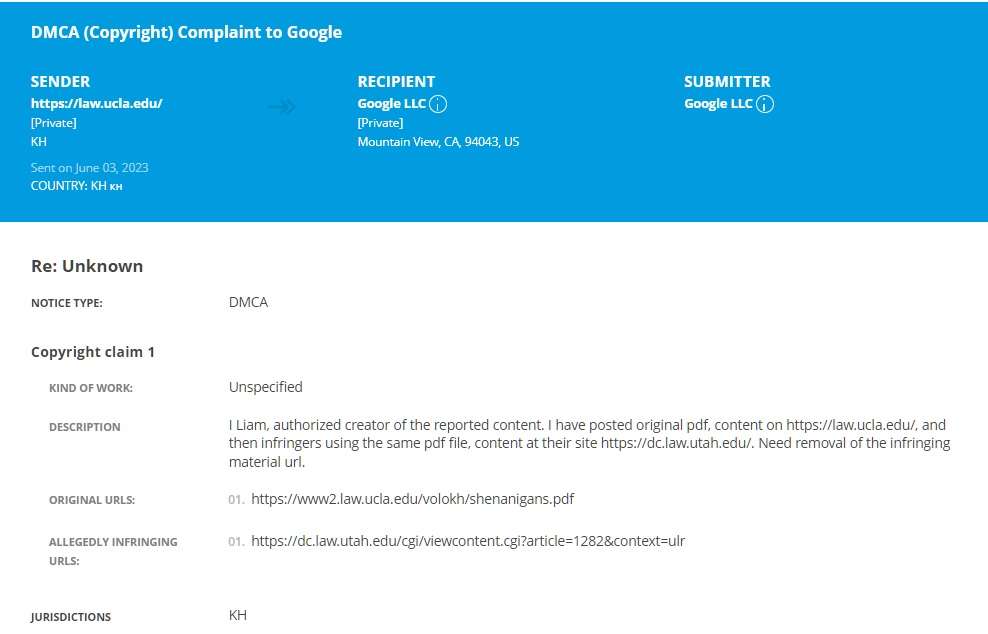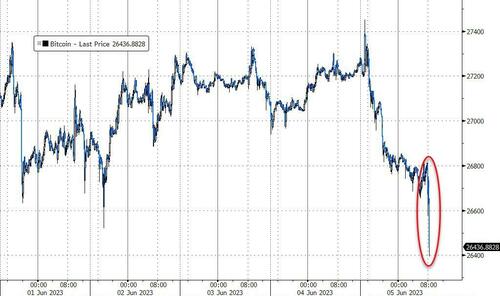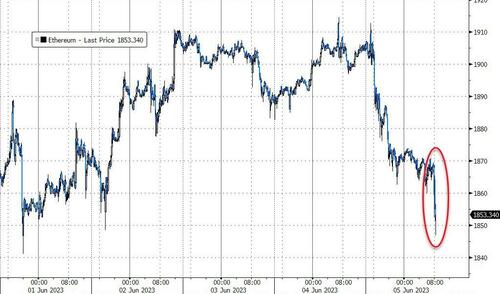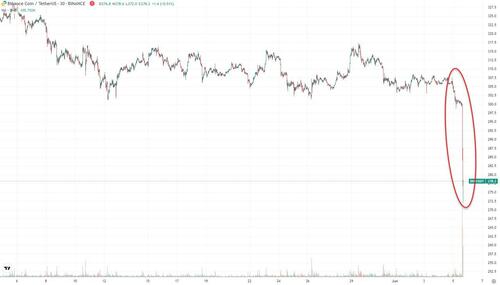Introduction
Every August and December, thousands of practicing lawyers ready themselves for the fall or spring classes they will be teaching at any one of the 199 ABA-approved law schools around the country. Whether in their first or 30th year of teaching, and regardless of whether they do so at a national, regional, or local law school, like clockwork, these dedicated professionals volunteer to return to the classroom to share their knowledge, insights, and experiences with the next generation of lawyers.
Instructing at the law school level is a tremendous responsibility that adjuncts take seriously, and, for most, it represents a source of enormous pride. The opportunity to “play professor” is also usually welcomed fun or perhaps even a distraction from the everyday norms of practicing law, even if (or perhaps especially because) it is only on a part-time basis.
In the same way a litigator preps for trial, these part-time professors pore over potential class readings; draft and/or fine-tune their syllabi; address required administrative tasks; engage with students on class or career issues; and otherwise do what is necessary to be ready for teaching action. But amazingly, and although adjuncts are unquestionably perceived as a relevant part of legal academia, very little has been written about them.
The adjuncts’ presence on campus tends to be accepted as a given. Little thought is paid to (i) what motivates them to take on these positions with little to no remuneration, (ii) the exceptional pro-economic impact this team of short-term instructors has on their institutions, (iii) what makes for a positive adjunct experience, and (iv) how institutions and their students can fully integrate adjuncts into the law school community with the attendant benefits to both from doing so. In short, although virtually every aspect of the law school experience has been meticulously recorded and analyzed, little to nothing has been written about adjuncts and the important—indeed, as the numbers might even suggest, vital—role this some quarters almost invisible group plays at law schools.
Our aim here is to fill this obvious void by initiating an overdue dialogue around the role of adjuncts in legal education. More specifically, we will take a closer, though necessarily summary, look at the mix of incentives motivating both adjuncts as well as the institutions that employ them. From these observations, we develop a list of best practices calibrated to ensure that adjuncts and their law schools get the most out of this important relationship.
I. Your Interlocutors
Two of your authors, both seasoned adjuncts who have been happily teaching law for a combined 35-plus years, decided it was time for a more public conversation about the role of adjuncts in today’s law schools. Recognizing that, as much as we might know about the subject, having the perspective of a veteran and sage full-time professor could only enhance the piece’s utility and accuracy, we were ever so fortunate to recruit Professor Eugene Volokh as our third author. As it turns out, he had already penned an article on part of the subject. That article from 2021, titled Why I Wouldn’t Recommend Adjunct Teaching at Law Schools Now,[1] undertook an interesting analysis of the reputational risks, and perhaps even professional dangers, facing practicing attorneys teaching law on the side.
Here, we expand on that analysis. We speak to the many pros—and also some of the cons—of serving as an adjunct. We also offer our back-of-the-envelope economic analysis of adjunct teaching, an area that, to our knowledge, has received no substantive attention in the scholarly research. Finally, and as touched on above, we propose some “best practices” that law schools should consider as they seek to embrace, fortify, and retain their adjunct cadre.
II. Law School Teaching—By the Numbers
Unlike with full-time law faculty, there is no comprehensive accounting of active legal adjuncts (aka “lecturers,” “lecturers in law,” “senior lecturers,” “adjunct professors of law,” “adjunct instructors,” “adjunct faculty,” and “part-time faculty”) at U.S. law schools.[2] So, to better understand the vital role this cadre of contingent academic laborers plays, we start with an empirical analysis that is admittedly, and necessarily, rudimentary. But something is better than nothing, and in an area where nothing currently exists, we offer these nonscientific yet quantitative observations.
A. There Are More Adjuncts Teaching More Classes Than You Might Think
Based on our sampling of law school websites, as well as the numbers certain helpful institutions shared with us, in the typical U.S. law school, there are roughly two adjunct professors for each full-time professor listed on the law school’s faculty page. Although listed adjuncts are less likely than full-time professors to be teaching each semester, and although the classes taught by adjuncts tend to be 2L and 3L electives with a smaller number of enrolled students (usually fewer than 35), we believe assuming a 2:1 ratio of rostered adjuncts to full-time professors is at least directionally close to the mark.
For example:
- The University of Colorado law school website lists 65 “Resident Faculty” and 181 adjunct faculty; in spring of 2023, adjuncts taught no 1L courses but taught 33 of the 62 upper-level classes.[3]
- The University of Houston Law Center reports that it has 38 tenured or tenure-track faculty and 150 adjunct faculty.
- The University of Chicago law school website shows 62 “full time reaching faculty” v. 127 “Lecturers in Law” (another—and, to some ears, a more dignified—term for adjuncts).
- At the UCLA law school, there are 97 full-time professors and 112 adjuncts.
- Harvard‘s faculty page includes 115 professors and 191 adjuncts.
- The University of Georgia has 34 tenured or tenure-track faculty and 65 adjuncts.
- At Northwestern University‘s law school, we find 62 “Research Faculty” and 180 adjuncts.
Almost 12,000 adjuncts in 199 law schools. Assuming a conservative average of 60 adjuncts per law school, we estimate a total of some 12,000 adjuncts around the country teaching at one or more law school over the course of an academic year.
Adjuncts typically teach up to 45% of law school classes. Adjuncts on average teach between 25-45% of a given law school’s courses. That said, and as noted above, in most cases, the adjuncts teach narrower subjects in more boutique-style classes with 35 or fewer students. The larger 35-90 student 1L courses, such as constitutional law, torts, property, civil procedure, and criminal law, in contrast, are typically taught by full-time faculty.
Put another way, the total number of individual courses taught by adjuncts during the 2L and 3L years in most law schools is often at or above 50%. Yet it is also true that the total numbers of students taught by full-time professors during all three years of law school is greater than 50%, and, therefore, necessarily greater than the total number of students taught by adjuncts. (And, as discussed below, this less-than-50%-of-students-taught-by-adjunct benchmark is, in fact, a formal, albeit debatable, ABA accreditation requirement.)
B. What Law School Students Pay Per Credit Hour
No surprise here, law school is expensive. The average tuition cost for law school (not counting cost of living, books, insurance, computers, etc.) is at or above $50,000 per year. Consider that, in 2020, the most expensive law school was Columbia University (at approximately $72,360), and the least expensive law school was Inter American University (at approximately $15,510).
Earning a JD, in turn, requires at least 83 credit hours, per ABA Standard 311(a). So, rounding up, each law student takes roughly 28 credit hours per year.
Based on the above necessarily rough calculations, the typical law student pays approximately $1,785 per law school credit (that is, $50,000 per year divided by 28 credit hours per year). Translating this into gross law school income, a typical two-credit class generates about $3,570, which, when multiplied by an average of, say, 30 students per class, yields a gross total of some $107,100 per class ($3,570 x 30 students) to the institution.
C. Adjunct Professor Pay Leaves Little Doubt: Adjuncts Are Not Motivated by Money
Standard adjunct pay. The standard pay for an adjunct is $3-5,000 per class.[4] And even then, in practice, many law school adjuncts donate that pay back to the law school, particularly if they are alumni.
Adjunct opportunity cost. From a purely numbers analysis, there is a surprisingly significant opportunity cost to a practicing lawyer who chooses to teach part time. It is not unusual for an adjunct to dedicate at least 100 hours per semester to teaching and all that comes with it. That includes preparing the syllabus and selecting the course material; preparing for and teaching the one or two dozen individual (virtual or in-person) classes per semester; traveling to and from class; meeting with and advising students regarding class materials, the law student experience, and career path; grading papers, exams, and/or other assignments; writing letters of references; and attending to the various administrative requirements that the job entails. Further, adjuncts must bear whatever additional costs (copying, mileage/gas, etc.) are incurred—and, in some cases, adjuncts even have to pay for incidentals such as for parking on university lots.
Many of the adjuncts, particularly in the major markets in which many law schools are clustered, are “big law” partners who bill at rates close to or well above $1,000 per hour. Conservatively, this translates into approximately $100,000 worth of billed time that the practicing lawyer, and, derivatively, his or her law firm, forgoes for the privilege to teach. (For senior partners, that figure can be 1.5 to twice as much.)
So, assuming the general rule of thumb often repeated in the industry that partners take home some 1/3 of what they bring in or bill, each adjunct foregoes roughly $33,000 in lost law firm take-home pay, assuming, of course, that the 100 hours spent teaching could have been spent on billable work.
Hourly pay. Based on these baseline calculations, the hourly pay for an adjunct is approximately $30-50/hour ($3-5,000 divided by 100 hours). Mathematically, then, an adjunct voluntarily accepts a ~95% pay cut for each hour of teaching when compared to what the adjunct could earn working for their paying clients.
Insignificant adjunct overhead. Law school overhead is largely fixed. Adjuncts, moreover, require far less administrative resources than full-time professors, who, for example, have offices in the law school, use on-site assistants, receive school-issued computers and other electronic devices, receive healthcare insurance, qualify for research stipends, have research assistants, go on sabbaticals, etc.
Thus, although the full-time law professor is the beneficiary of institutional sunk costs, in most cases, the adjunct is in effect a solo operator. The typical adjunct prepares everything at home or work, shows up at the law school to teach the class, and then departs. In fact, it is not at all unusual for an adjunct to get through a semester without once receiving anything but the most ministerial institutional assistance. (We hasten to add that we consider this present dynamic very negative—in fact, if law schools follow our practical integration advice below, adjuncts will have a far less transactional, far more nurturing and mutually-reinforcing, relationship with their institutions).
So, what this math establishes is that adjuncts’ pay is less than 1/20th of what the school grosses on each class , assuming the adjunct is paid $5,000 per class while generating some $107,100 in gross law school income. Suffice it to say that this 21X(!) institutional return on investment is truly extraordinary and may be unparalleled in higher education.
D. Full-Time Professor Pay—Among the Highest in Higher Education
Based on the 2021 Society of American Law Teachers’ salary survey and similar sources, a full-time law school professor, a catch-all term used to include assistant professors, pre-tenure associate professors, and tenured professors, on average earns $150,000. At what is sometimes referred to colloquially as “elite law schools,” that average pay quickly rises to or well above $500,000 per professor per year.
But even these numbers do not account for summer research stipends and other “extras” or “perks,” such as preferred status for faculty children in undergraduate or even graduate admissions and free or reduced tuition for these children. Additionally, depending on the professor’s area of expertise and experience, law schools permit them to supplement their income —often significantly—by counseling on court cases, testifying as experts, advising companies, etc.
Taking into consideration annual leaves, outside research grants, and sabbaticals, among other such things, the typical full-time professor is available to teach nine months a year and teaches between 8-12 credit hours a year. In contrast, the average adjunct teaching a two-hour course for two semesters or a three-hour class for one semester teaches four or three credit hours, respectively.
By the numbers, then, the average full-time professor is compensated at a rate of at least ~$16,700 for each credit hour, as compared to the average adjunct professor who receives at most ~$2,500 for each credit hour when the adjunct teaches for four credits per year.[5] Thus, a full-time professor receives more than seven times the pay of an adjunct teaching the exact same class; and, as noted, the opportunity costs for most law professors are not on par with those of adjuncts.
But putting all the numbers aside, and at the risk of noting the obvious, full-time law professors are, of course, not exclusively paid to teach. Depending on seniority, professors are expected to engage in various levels of scholarship, administrative work, recruiting, and committee involvement, among other important duties that go to the very vitality of the institution.
III. the Society of American Law Teachers’ Curious Opposition to Loosening ABA Standard 403
The Society of American Law Teachers, despite having as part of its stated mission “diversifying law schools” and “improving the legal profession,” has been vocal in its opposition to the ABA loosening Standard 403. That standard requires at least 50% of aggregate law teaching—so all three years—to be performed by full-time faculty. The Society’s main argument opposing adjuncts teaching more classes is that adjuncts purportedly are “less available” to students than full-time professors.[6]
Setting aside our skepticism of the adjuncts-are-less-available argument, we observe that such a policy may in fact hurt efforts toward diversity, equality, and inclusion. More specifically, artificially restricting the number of adjunct instructors in this way threatens to create barriers that might otherwise lead to a greater proportion of diverse candidates being part of the law school community.
Highly paid “big law” partners, after all, are able to take on adjunct positions with less concern for the net financial costs of doing so. The same cannot be said of those working for the government, pursuing public interest jobs, or working at smaller firms that may have comparatively greater diversity in their attorney ranks. Although this is not the place, conducting a deeper dive into how these protectionist dynamics aid, or fail to aid, the profession’s mission of diversifying today’s law schools would be a worthwhile exercise.[7]
IV. Observations From the Adjunct’s (Funk’s and Boutros’s)
Perspective
Although the numbers laid out above are not scientific, they directionally go far in persuasively supporting the conclusion that adjuncts are financially precious—and, in fact, indispensable—to law schools. It is not an overstatement to say (and so far, none of our law school contacts have disagreed) that most U.S. law schools would have serious—and in many cases, life-threatening—operational challenges if adjuncts suddenly disappeared. No surprise, then, that adjuncts over time have become a prominent fixture in virtually every law school in the country—and that they are far more present today than they were, say, 20 or 30 years ago. This is a dynamic some call the “adjunctification” of legal education.[8]
Institutions are, therefore, smart to publicly recognize how much they value their adjuncts. Arizona State University, for example, has a page on its website dedicated to “Amazing ASU Law Adjuncts“—a very nice touch.
But life is hardly all about money, whether it is making it, spending it, or, as most relevant here, making it for others. To that end, there are, of course, many excellent reasons for taking on an adjunct teaching position that have little to do with dollars in the adjunct’s pocket.
A. Teaching—and Learning From—Students
For one, adjuncts are typically able to teach in a bespoke setting. They enjoy a rare opportunity to share their subject-specific expertise with students who have specifically sought out their course. At some law schools, a percentage of these students are also LLM candidates who bring unique legal insights and perspectives to the class discussion, especially because frequently these students have been practicing law in their home country for several years. Teaching and learning from such thoughtful class participants are real benefits, both to other students and the adjunct, that cannot be quantified in dollars and cents.
Full-time professors, as noted, generally teach the required introductory courses, such as civil procedure, criminal law, torts, property, and/or constitutional law, among others. In contrast, most adjunct-taught classes will have 20-35, and often fewer, students and tend to focus on more specialized subject matters where the instructor’s background and real-world experiences shine more brightly. Although teaching such tailored courses does not mean that the more abstract aspects of legal theory are left at the door, in most cases, the added expectation is that adjunct instructors teaching courses to 2Ls and 3Ls will help produce more practice-ready students.
Experienced adjuncts also recognize that the teaching experience goes both ways. It is undoubtedly true that an adjunct putting his or her subject matter expertise on display, engaging with students in an area of the adjunct’s interest and specialty, and having a bit of a “break from the norm” can be profoundly rewarding, both professionally and intellectually, for the instructor. But knowing that each week the adjunct will have to be ready to teach also sharpens the adjunct’s own skill sets and provides that extra push to stay up to date on the most current legal and public policy developments.
B. The Value of Student Feedback
Receiving end-of-class anonymous student feedback through instructor evaluations can make for high anticipation, but it also is accompanied by unique, and potentially significant, benefits. Taking serious student commentary on a teacher’s performance offers the opportunity to honestly evaluate, reflect on, and address issues with one’s presentation style, substantive knowledge, or other aspects of one’s ability to convey complex concepts and problems in an engaging and effective way.
For those adjuncts who litigate cases, that type of periodic feedback can be valuable for their in-court performance. And for non-litigators, student feedback may be even more helpful, considering that, say, transactional lawyers may not regularly get such candid critiques on their demeanor and ability to convey information clearly, succinctly, and effectively.
C. Burnishing the Adjunct’s “Brand” in a Competitive Legal Marketplace
Beyond self-critical analysis, there are also reputational upsides to being an adjunct. That a law school has vetted the practitioner and decided to entrust its students to learn from that person conveys an external, oft-prestigious seal of approval. Teaching as an adjunct for a long time is a proxy for staying power and continued excellence.
Whether in LinkedIn profiles, firm bios, Twitter homepages, or otherwise, clients, general counsels, and other consumers of legal services also tend to notice the distinction of a teaching position. (And media outlets also seem to prefer commentary from a lawyer who “teaches law at law school X” rather than one who is exclusively a “partner at law firm Y.”) In this way, burnishing the practitioner’s “brand” can make the difference in an ever-more competitive marketplace of lawyers offering their legal services.
D. Enjoying A Break from the Norm
Finally, adjuncts also have an opportunity to immerse themselves in an academic community that is very different from their typical day-to-day interactions with colleagues and clients, whether those instructors come from law firms, public service jobs, in-house, or elsewhere. Like most things in life, however, adjuncts tend to get back what they put in.
Full-time professors joining a faculty are presented with immediate opportunities to fully embed themselves in their new institution. On the other hand, many adjuncts, even ones who have taught at the same law school for years, simply come and go from their classroom, never getting involved with the other faculty members or the broader administration. No surprise, then, when these instructors never feel like a full-fledged member of the law school.
Of course, this is not always the adjunct’s fault. Some law schools go out of their way to make their adjuncts feel like they are truly part of the campus and intellectual life. Others leave the adjuncts to figure things out for themselves, sending the message that they are little more than the hired help whose terms are over in a quarter or semester. In our estimation, although it ultimately is adjuncts’ obligation to reach out to faculty and otherwise affirmatively make their best efforts to become a real part of “their” law school community, law schools should make a concerted effort to welcome adjuncts into the law school family (and keep them there—more on this below).
To be sure, adjuncts are not teaching in the hopes of amassing personal riches. Instead, the big draws for adjuncts are the opportunity to give back and share experiences with future lawyers, the benefit of staying on top of fresh legal developments, the “prestige” associated with a teaching appointment, and the chance to enjoy a break from the norm. True, an adjunct teaching post is a great and honored position to receive. Given that truth, our focus on the economics of adjunct teaching, then, is offered not as a criticism but, rather, as a recognition of economic, professional, and interpersonal realities that, for no good reason, have been all but ignored.
V. Observations From the Full-Time Professor’s (Volokh’s)
Perspective
As my co-authors correctly state, adjuncts are immensely valuable to law schools. They help cover subjects that full-time faculty members often cannot. They help law schools provide a mix of classroom experiences—more theoretical (though, of course, not purely theoretical) perspectives from the full-time faculty (who often have limited practice experience) and more practice-minded (though, of course, not purely practice-minded) perspectives from the adjuncts. And, to be blunt, they are a financial bargain for the school compared to full-time faculty for the reasons given above.
A. Limited Protections for Adjuncts
Although my co-authors have eloquently described the positives of teaching parttime, doing so is not without its risks. Continuing with the bluntness, though, adjuncts also have to understand, human nature being what it is, that they are not going to have the same academic freedom that faculty members do. If an adjunct says something controversial, whether in class or outside it, it is easy for the law school to simply not renew the adjunct’s contract.
Even if the law school or the broader university provides assurances of academic freedom to all faculty members, the lack of tenure means that it’s easy for the law school to dismiss controversial, and even not so controversial, adjuncts without providing any tangible evidence that this was done because they were controversial. “We just don’t need your class anymore” or “we’re interested in trying out a different teacher for your class” is all that the university will need to say.
Indeed, adjuncts have less protection even than untenured but full-time faculty. Those faculty tend to have friends on the faculty who will go to bat for them. Their contracts are also usually routinely renewed, and failure to renew the contract will be noticeable in a way that it wouldn’t be for adjuncts. And from the course title to continued employment at the school, adjuncts have less control than full-time, tenured professors and, in the end, almost always have no choice but to comply with institutional directives.
B. Professional and Reputational Dangers
There is also a related concern, which is perhaps more serious because it deals with dangers to the adjunct professor’s (lucrative, one hopes) day job and not just dangers to the (not at all lucrative) adjunct position. In recent years, law students and others have become much more likely to publicly criticize law professors’ statements—and those criticisms have become much more likely to be aired in the public square of social media and in other publications that reach far outside the law school.
When there is a controversy about an adjunct, the adjunct might be subjected not to a quiet parting of the ways, a discreet conversation in which the dean politely sends the adjunct on his or her way. Rather, the adjunct might well find himself or herself in a roiling public controversy, potentially accompanied by public excoriation by students and public condemnation by administrators. Adjuncts who are practicing lawyers are particularly vulnerable to this because their relationships with their firms or with their clients, potential and current, can get seriously compromised if they get caught up in an academic freedom controversy.
Nor is it easy to stay safe just by avoiding controversy in class or even by teaching a seemingly uncontroversial topic. One can get publicly fired from a law school for things one says outside class, including if one doesn’t realize he or she is being recorded or overheard. Indeed, in one instance, an adjunct was publicly pushed out just because he didn’t object to a statement made by the person he was talking to.
One can similarly be on the pointy end of a public firing (and associated shaming) for seemingly accurately discussing important subjects that naturally come up in one’s job. One can get fired by a law school and then fired, as a result of the publicity, by one’s day job for relating stories from practice where people had said offensive things. And where even tenured professors have been sharply criticized by the law school administration for things like condemning the government of China in a blog post (saying “China” five times and then saying “Chinese” to refer back to the Chinese government’s actions),[9] adjuncts face even more peril.
To be sure, this was always a risk. But it appears that, in recent years, the risk has appreciably increased with the growth of social media and the greater willingness of students to file formal complaints about what they see as insensitive or otherwise offensive statements. (I am not expressing any normative views here; instead, I am speaking descriptively. One might for good reason view it as a positive that students are more willing to file such complaints these days; but our point is simply that this does seem to be happening.)
Indeed, in many incidents that have led to public controversy, the faculty members have reported that they had taught the class without objection in previous years. They thought it was safe; indeed, they hadn’t even considered that it might not be. Indeed, they might have thought of themselves as progressive and fully synched up with the politics of the campus. But, regardless of one’s political views, it seems clear that we are in a different time now.
Now, of course, most adjunct professors will never become floats in this parade of horribles. Many practicing lawyers will accept these statistically modest risks and will still want to become adjuncts. Nonetheless, if I were advising friends who were considering trying to become adjunct professors today (or even considering whether to remain adjuncts), I would urge them to at least consider these risks.
VI. Conclusion: Suggested Best Practices for Integrating Adjuncts into the Fabric of the Law School
We end this short excursion into the underexamined professional and economic realities of today’s law school adjunct with some modest suggestions on how law school administrators might make the teaching experience better for their adjuncts while also ensuring that the institutions get the maximum benefits out of their dedicated visiting instructors:[10]
A. Recommendation Category 1: Making Adjuncts Feel More Welcomed and Valued
- Make Peer Introductions. Ensure that the administration introduces adjuncts to the full-time professors teaching the same subject or working in the same field, and schedule informal get-to-know-you coffee meetings.
- Promote Faculty Pairing. Link up new adjuncts with members of the full-time faculty teaching the same subject matter so that the adjuncts have an “inside” connection, are invited to events, and generally feels more comfortable as they get to know the institution.
- Initiate Administration Introductions. Strengthen institutional bonds by scheduling one-on-one or small group meetings with the law school dean, the dean of students, DEI coordinators, and other key members of the institution’s leadership.
- Sign Adjuncts Up for Periodic Alumni Publications. Add adjuncts to the list of recipients of the law school’s periodic alumni publication.
- Boost Adjunct Pay. Boost adjunct wages to at least $10K/class so that a broader cross-section of the legal community—especially those in public interest—can be recruited to teach.
- Cover the Cost of Incidentals. Cover the costs of trivial incidentals, such as parking on university property, to avoid sending the wrong message. Do so not because of the modest monetary cost, but because providing these small “perks” sets the right tone with adjuncts.
- Provide Thoughtful End-of-Semester Recognition. Provide small tokens of appreciation (for example, a thank you note with a mug/t-shirt/sweater) at the end of each completed semester.
B. Recommendation Category 2: According Adjuncts a More Appropriate Level of Status Equity
- Give Adjuncts an Institutional Voice. Identify one or two adjuncts to, in a representative capacity, participate in law school administrative/faculty meetings, disciplinary hearings, etc. so that adjuncts have a more meaningful seat at the institutional table.
- Make Adjuncts Eligible for Teaching Awards. Only a handful of schools allow adjuncts to be eligible for teaching awards. Considering that full-time faculty are motivated by teaching awards (after all, why have them if not?), law schools should similarly either create teaching awards for adjuncts or, alternatively, make adjuncts eligible to receive the same teaching awards available for full-time faculty.
- Encourage Informal Institutional Integration and Knowledge-Sharing. Hold receptions and similar social events at the start and end of each semester to which both full-time faculty, staff, and adjuncts are invited. Welcome adjuncts to attend talks given by visiting lecturers and faculty, participate in faculty colloquia, take part in open student and faculty events, attend graduations, etc.
- Promote Adjunct Academic and Other Professional Contributions. Encourage knowledge-sharing, while leveraging adjunct achievements, by including adjunct publications, speaking engagements, honors, appointments, etc., in the standard weekly faculty circulars/newsletters and similar institutional publications (and, of course, make those publications available to all adjuncts).
- Forster Interdisciplinary Collaboration. In a world where the practical application of academic output is increasingly important, invite adjuncts to present to faculty on their area of expertise or to address some discrete real-world issues involving their subject matter. Such cross-pollination, in our experience, can be a significant generator of new ideas, both practical and academic, and can uniquely facilitate productive interdisciplinary collaboration.
- Encourage Full-time Professors to Guest Lecture in Classes Taught by Adjuncts, and Vice Versa. This collaboration can provide numerous benefits to faculty, adjuncts, and students. For example, it bridges the gap between full-time and adjunct faculty, encourages the sharing of knowledge between them, and makes for more diverse and enriching course content.
- Ensure Physical Mailboxes and Online Presence. Make sure that adjuncts have a physical mailboxes and a meaningful (not just name and title) online faculty/bio presence alongside their full-time colleagues.
- Offer Adjuncts Maximum Flexibility When Scheduling. Because adjuncts almost always have other professional commitments, including frequently demanding travel schedules, structuring lecture times around their schedules (say, allowing evening classes to be offered) will enable a broader pool of practitioners to devote their full attention to teaching during those times.
- Invite Adjuncts to Attend Graduation Ceremonies and Other Important Events in the Life of the Law School. Making such gestures further emphasizes and solidifies the sense of belonging that the law school community is extending towards adjuncts.
There are no doubt more and better suggestions on how to improve the adjunct experience for all stakeholders. Likewise, we are under no illusion that much more can be said, both positive and not, about the role of today’s adjunct within the broader institutional and teaching context. That said, the modest objective here was to start the important conversation about the proper role of adjuncts at today’s law school, generally, and to offer practical ways to maximize the win-win benefits to the institutions, the adjuncts, and the students, specifically. It is our hope that we in this short discourse we have delivered by providing the fodder necessary to advance that vital dialogue.
* Markus, a Partner at Perkins Coie and former federal prosecutor (Chicago), began his post-clerkship legal career as a Lecturer in Law at Oxford University (where he also earned his PhD). Beginning in 1997, he served as a law school adjunct at institutions including Northwestern University, the University of Chicago, Loyola University-Chicago, the University of Arkansas-Little Rock, and Denver University. Since 2013 he has taught his white collar and investigations class at the outstanding University of Colorado-Boulder. Markus can be reached at mfunk@perkinscoie.com.
** Andrew, Regional Chair of Dechert LLP’s white-collar practice, is a former federal prosecutor (Chicago) and law clerk on the U.S. Court of Appeals for the Sixth Circuit. Since 2011, he has been a Lecturer in Law at the University of Chicago Law School, where he teaches a course on corporate criminal prosecutions and investigations. Andrew is grateful for the opportunity to teach at—and the many years of wonderful experience he has had with—the University of Chicago Law School. Andrew can be reached at andrew.boutros@dechert.com.
*** Eugene Volokh , Gary T. Schwartz Distinguished Professor of Law at UCLA School of Law, consumes (exploits?) adjunct law professor services. Eugene can be reached at volokh@law.ucla.edu.
[1] Available at https://reason.com/volokh/2021/03/22/why-i-wouldnt-recommend-adjunct-teaching-at-law-schools/.
[2] A more fulsome discussion of the role of non-tenure tracked faculty other than adjuncts, with a particular focus on what we perceive to be a growing gradation among instructors who are not tenure tracked, such as legal writing faculty, non-tenure tracked clinical faculty, fellows, and lecturers affiliated with various centers and programs, is in our view also overdue.
[3] In the fall of 2022, and perhaps evidencing some COVID impacts, adjuncts taught 21 of the law school’s 51 upper-level courses; in the spring of 2022, adjuncts taught 23 of the law school’s 57 upper-level courses; and in the fall of 2021, adjuncts taught 17 of the 57 upper-level courses. With only a minor exception, no adjuncts taught any of the approximately 19 IL courses. Special thanks to the University of Colorado for providing these helpful statistics.
[4] In our experience, many adjuncts, particularly those who are among the alumni ranks, donate their teaching fee back to the law school.
[5] To be clear, we are not suggesting that full-time professor pay should be, or is, tied to student teaching credit hours. Indeed, modern law schools can in large measure be described as research institutions that pay tenure-track faculty to conduct that research. It makes sense, then, to observe a corresponding outsourcing of the teaching function to various non-tenure tracked teachers, particularly adjuncts, as well as non-tenure tracked clinical instructors. In this sense, then, adjuncts are both highly cost-effective and take the teaching load off of full-time faculty members, many of whom, in a candid moment, might admit that teaching students is not their favorite professional obligation.
[6] As some of our full-time teaching friends have pointed out, although this may not be the best argument against the adjunctification of law schools, there is an argument that labor conditions for instructors will generally deteriorate as schools replace well-paying jobs with strong benefits and job protections for what ultimately could be describe as easily-terminated volunteer (or, less flattering, “hobby”) positions. As we discuss below, and as others have also noted with some alarm, there are certainly legitimate concerns about the lack of institutional protections for adjuncts which, in turn, can pose threats to academic freedom through, among other things, excessive self-censorship.
[7] We are not aware of the Society of American Law Teachers, or anyone else for that matter, having launched empirical or statistical studies of these matters.
[8] Although beyond the scope of our present endeavor, we believe that an examination of the history of adjunct teaching at law schools, and, specifically, the relationship between more adjuncts teaching highly specialized upper-level courses and the more practice-focused professionalization of even “elite” law schools (who in bygone times—that is, when we went to law school—conspicuously favored legal theory over doctrine) may be challenging due to the likely dearth of historical data but would add a great deal to this discussion. Indeed, employing successful practitioners with a professional knowledge base to help get law students practice-ready (which we believe has increasingly become the goal of all law schools), and to offer a far broader range of courses with minimal additional financial outflow, makes a great deal of sense.
[9] See, e.g., Kristina Davis, USD Law Professor Under Investigation over Chinese Reference in Coronavirus Blog Post, S.D. Union-Tribune, Mar. 19, 2021. The University Provost’s office ultimately rejected the complaints, see Mark Saunders, University of San Diego: Professor’s Comments in Blog Protected by Academic Freedom Policy, 10 News (San Diego), May 4, 2021; but if this had happened to an adjunct professor who was a practicing lawyer, the publicity surrounding the investigation might have been quite damaging despite any eventual vindication.
[10] As a colleague has correctly pointed out, our recommendations basically fall into two buckets. One bucket consists of modest requests that school can easily respond to and what would make adjuncts feel more welcomed and valued (and, accordingly, more committed to both the institution and their teaching activities). The other can be described as recommendations that, both implicitly and explicitly, call for greater status equity in law schools; the call for a role in governance and discipline being emblematic of this second category of recommendations. We, therefore, divide up our recommendations into these two broad groups, recognizing that certain recommendations could fall into both.














